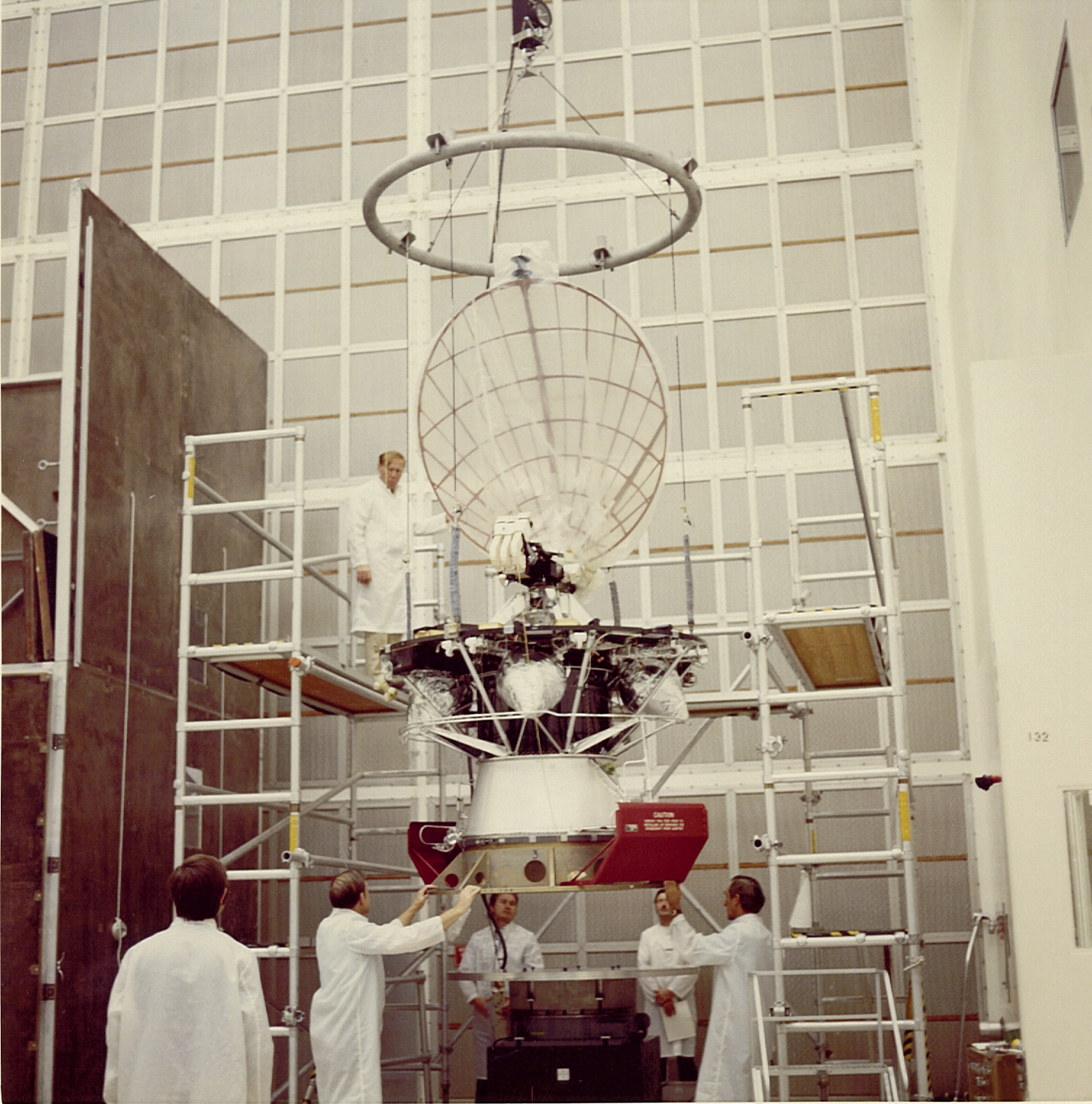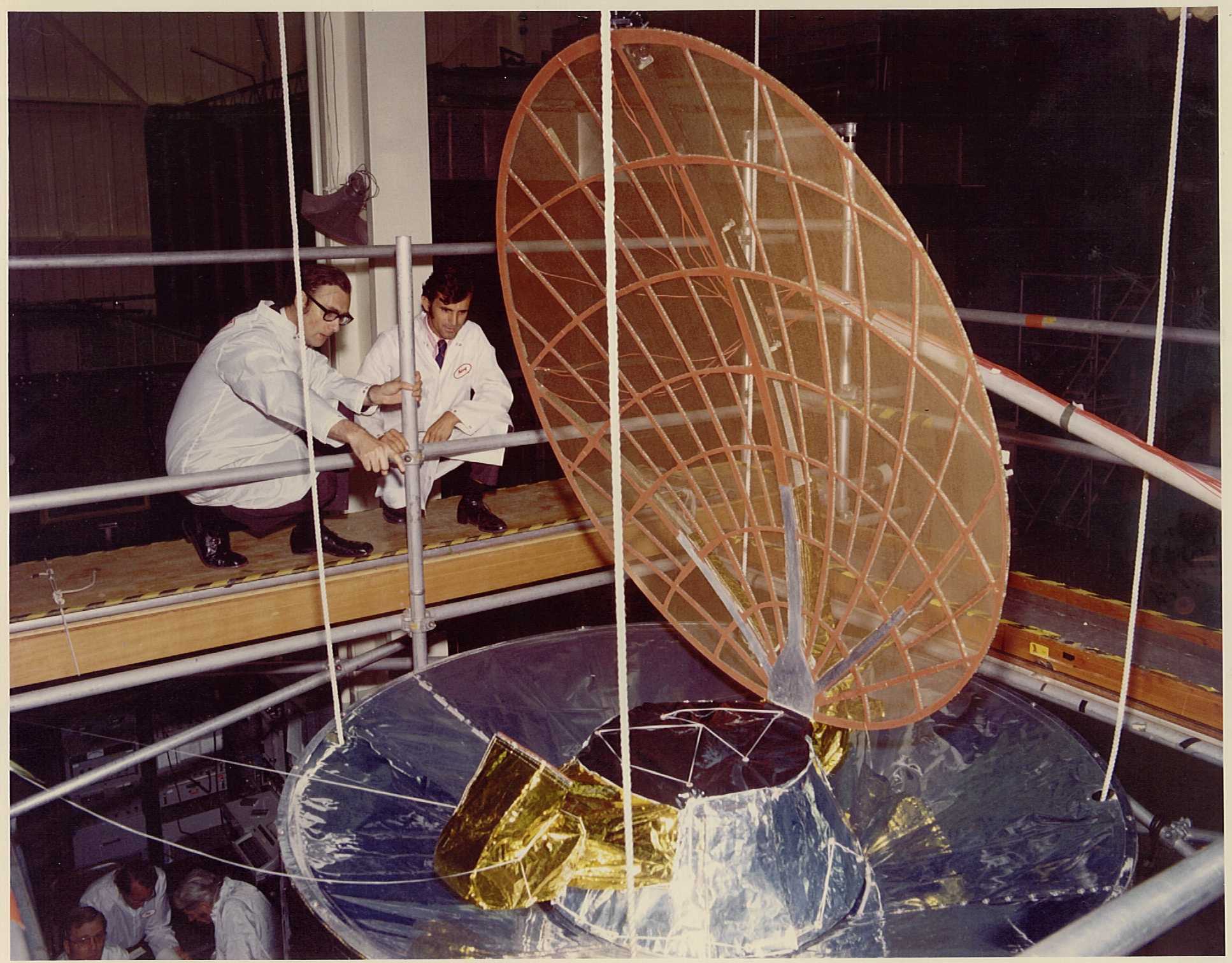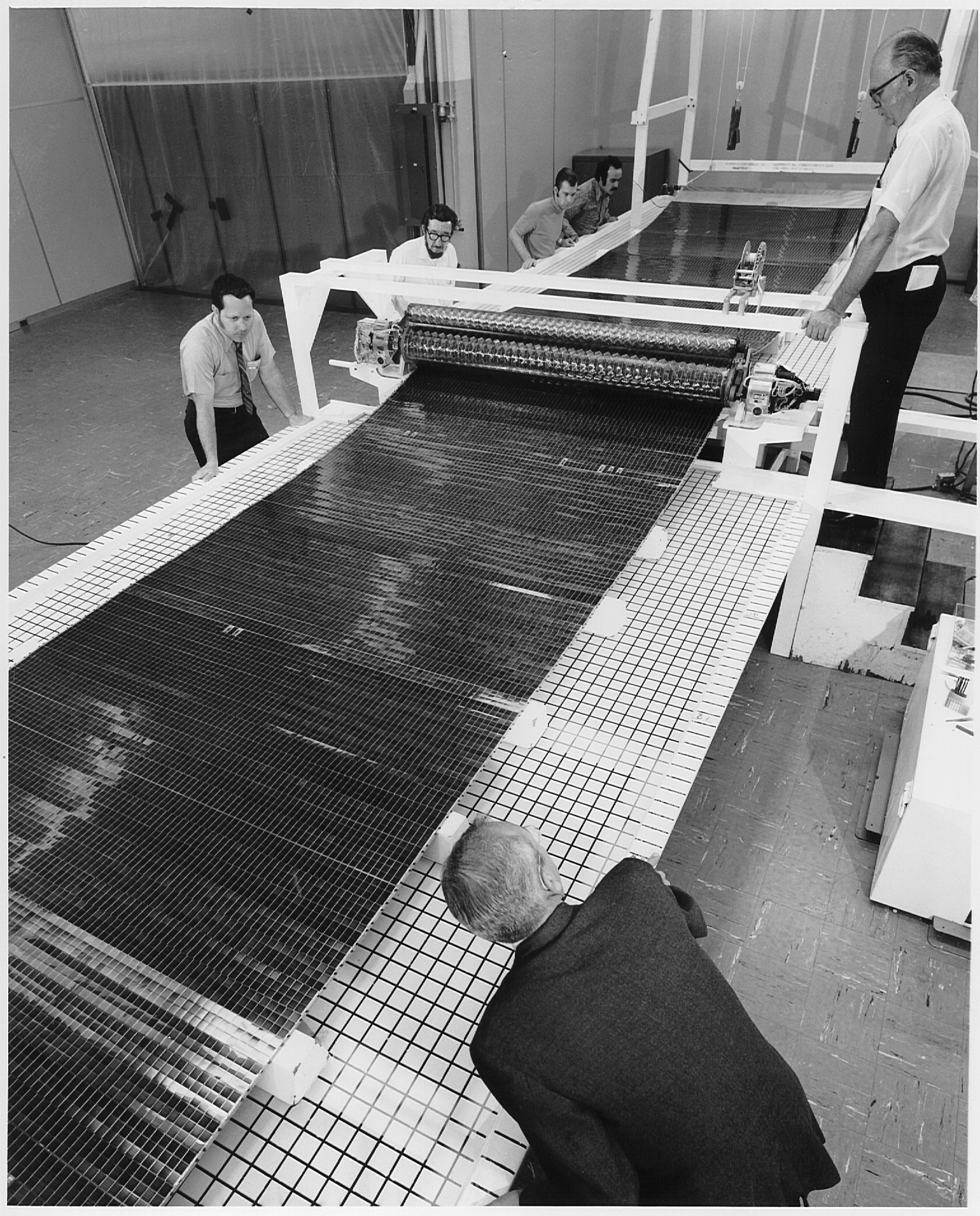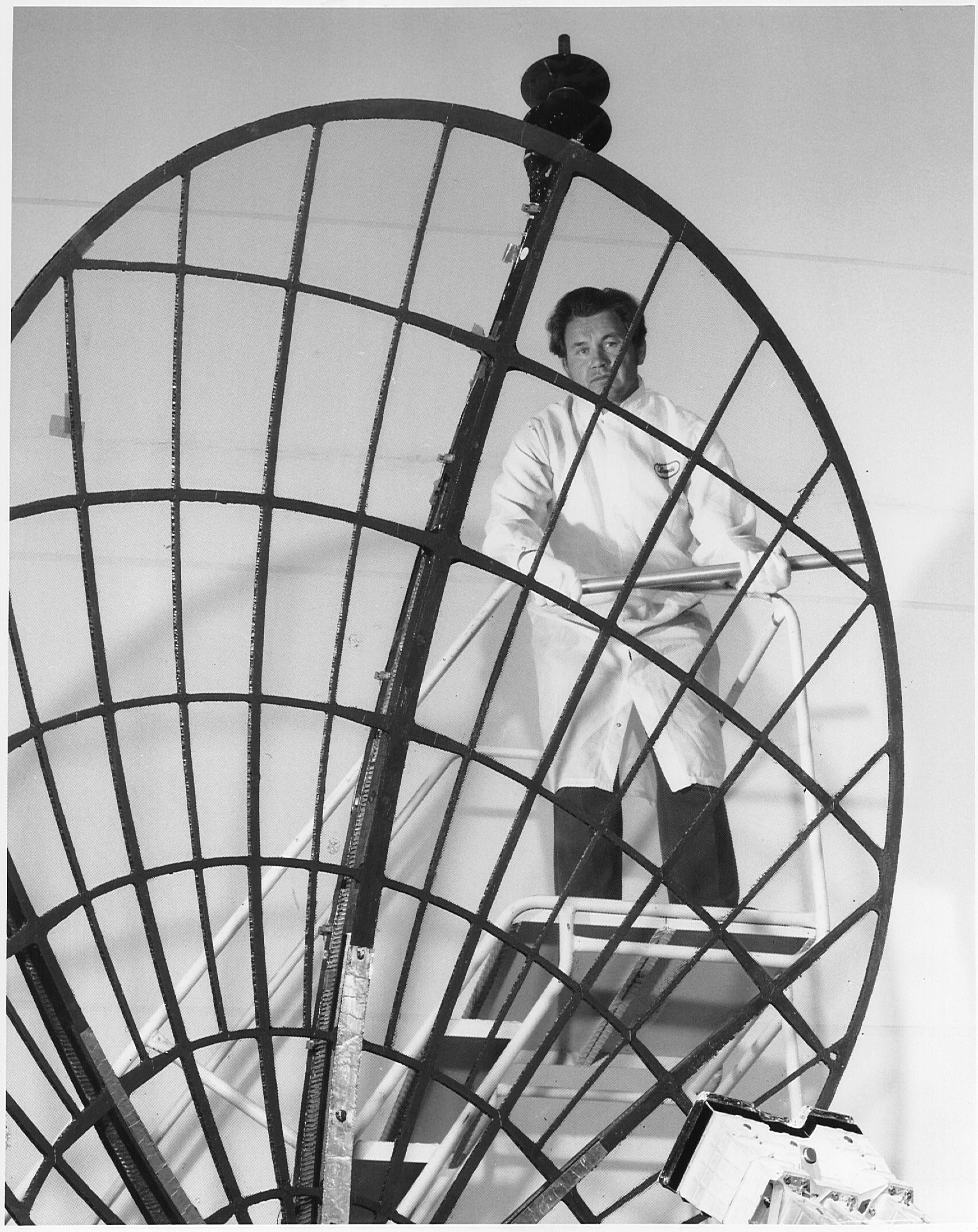
Photo provided by Telesat Canada
The ANIK series of domestic synchronous communications satellites, under construction by Hughes Aircraft Company, is intended to provide an economical space segment to supply telephone and television service to widely separated locations in the vast provinces of Canada.
 Photo provided by Telesat Canada |
Hughes is building three flight vehicles for Telesat Canada under a $30 million contract. Telesat is a partnership comprised of government, common carriers, and the public for the establishment of a Canadian domestic communications satellite system.
The first satellite in the series, ANIK 1, is scheduled for launching from Cape Kennedy in the last quarter of 1972. Participating jointly with Hughes in the construction of the spacecraft are two Canadian firms, Northern Electric Company, Ltd. and Spar Aerospace Products, Ltd.
Each satellite will provide 12 high capacity microwave channels for color television, or alternatively, any channel may be used for as many as 960 one-way telephone calls.
To assure that the regions specified by telesat are properly illuminated, the communications antenna beam pattern is shaped and aimed to cover a wide area of Canada stretching from Victoria, Vancouver and Whitehorse in the west to St. John's in the east, and from Winnipeg and Toronto in the south to such remote northern regions as Frobisher Bay and Inuvik in the Northwest Territories.
 Photo provided by Telesat Canada |
The New satellite, which represents the world's first domestic synchronous system, is designed to deliver high communications capability at low cost. With this goal in mind, Hughes incorporated in the design methods of reducing weight of the satellite with a resulting lower cost of placing it in orbit. Advanced technological simplifications in the communications payload as well as in spacecraft housekeeping functions further lowered overall cost of the satellites. These design simplifications both improve performance and increase the expected life spa of the spacecraft to over seven years. The spacecraft is 140 inches in height and approximately 75 inches in diameter. It will be launched by a Thor Delta booster. The satellite will weigh approximately 1200 pounds at liftoff, and approximately 600 pounds after the apogee motor is fired.
General Design Specifications
Over 20,000 N-on-P solar cells, each two centimetres square, are affixed to the solar drum which is 74.3 6 inches in diameter and 60.5 inches high. The cells are attached to the drum with rubber cement rather than epoxy, another of the weigh-saving economies incorporated in the original design.
The cel1s, which are supplied by the Helictek division of Textron, will provide about 300 watts of direct current power when the satellite is in orbit.
Main body of the satellite consists of a 30-inch diameter thin-walled cylinder containing a solid propellant apogee-motor (United Technology Center) and supporting a 73-inch diameter honeycomb sandwich platform.
 Photo provided by Telesat Canada |
The platform contains the spacecraft's communications repeater, telemetry and command electronics, and batteries. At the center of the platform is a pedestal-type support and motor-bearing assembly that drives the communications antenna, which is despun at a rate equivalent to the 100 rpm/spin rate of the satellite in orbit.
Significant reductions in weight (some 70 pounds) is achieved by using thin-walled Invar waveguide filters throughout the satellite's redundant repeater system.
The communications repeater receives signals sent from ground stations in the 5925 to 6425 MHz band and reconverts these down to 3700 to 4200 MHz for retransmission to other stations.
 Photo provided by Telesat Canada |
The satellites parabolic communications antenna is covered with a fine metal mesh making it optically transparent, reducing in effect what would otherwise be significant disturbance of the satellite by solar pressure. The feed assembly consists of a 3 horn aperture which accommodates both receive and transmit frequencies.
The parabolic antenna also supports the torroidal beam command and telemetry antennas used during the transfer orbit.
Antenna despin control is accomplished by a signal processor aboard the satellite acting on a ground-generated pilot signal. Redundant attitude sensors aboard the spacecraft, consisting of sun and earth sensors, provide data which allow determination of the satellites spin axis orientation.
The two earth sensors are 15-micron infrared bolometer detectors and video amplifiers mounted in small telescopes. These are squinted 5 degrees North and 5 degrees south and are separated by 45 degrees in the East-West direction.
The satellite is also equipped with an independent pair of hydrazine reaction systems for control of the spacecraft's orbital inclination, longitude and orientation.
In addition to the solar panel array, the satellite carries a pair of 28-volt nickel cadmium batteries to provide electrical power during prelaunch activity, launch to separation, transfer orbit, and the 46-day annual eclipse periods occurring during vernal and autumnal equinoxes.
ANIK DESIGN FEATURES
Reprinted courtesy of National Museum of Science & Technology